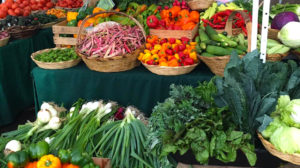
Image belongs to rightful owner.
“Thirteen farmers markets in Minneapolis now accept EBT and offer a Market Bucks coupon to help low income residents purchase more healthy, fresh food at affordable prices.”
I know how expensive it can get when trying to find healthier ways to eat. Fresh fruits and vegetables are always so expensive. But hey! Are you with the Supplemental Nutrition Assistance Program (SNAP, formerly known as food stamps)? If yes, there may be a way for you to purchase fresh vegetables and fruits more affordably.
SNAP is delivered via an Electronic Benefit Transfer (EBT) card and guess what? Over 30 farmers markets across Minnesota accept EBT!! Going to local farmers markets to purchase your greens and fruits can be a cheaper alternative compared to super markets and grocery stores.
“In 2010, the Minneapolis Health Department (MHD), Blue Cross/Blue Shield of Minnesota (Blue Cross), and the Institute for Agriculture and Trade Policy worked together to make Electronic Benefit Transfer (EBT) services available at the Minneapolis Farmers Market and Northeast Farmers Markets, which has accepted EBT since 2006. Partners also launched an incentive program called ‘Market Bucks’ to encourage EBT customers to use their benefits at the markets. Customers who spent at least $5 in EBT received an additional $5 in Market Bucks, essentially doubling their purchasing power for healthy foods.”
This all sounds great! I grew up shopping at the local farmers markets in Minneapolis and Saint Paul and it has always made it a bit easier for my family. In my opinion and from experience, it is definitely way more affordable compared to grocery stores; and now that more and more farmers markets are accepting EBT, it is going to help families of lower income more. The program trying to promote the use of EBT benefits at farmers markets is also so awesome, you spend but also earn money at the same time!
Overall, I think shopping at farmers markets for majority of your food is a great choice and should already be apart of your shopping routine. You save more and the veggies you get are probably way fresher. Try thinking about stopping by a farmers market to check it out! Even if you’re not apart of SNAP, still try checking out the farmers markets around you. I recommend you to because I personally love them. You can look up farmers markets in your area by googling it or if you’re in the Minneapolis areas, click the link below to see the list of farmers markets in Minneapolis.
—
Information received from the City of Minneapolis, MN website. Read more about it by clicking on the link below.
There are also EBT brochures, fliers, and postcards in English, Spanish, Hmong, and Somali if you would like to have it in hand.
http://minneapolismn.gov/health/living/eating/community-gardens

